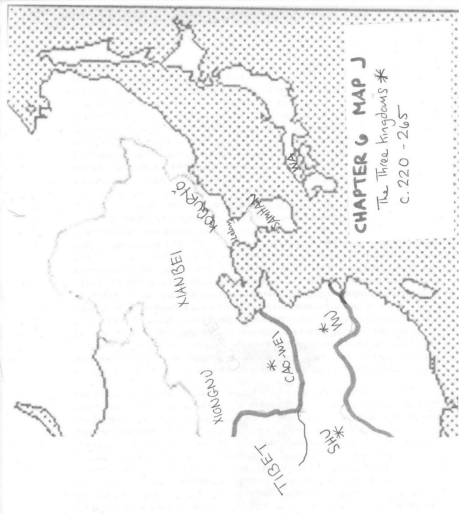6.1: Dividing and Uniting
- Page ID
- 135123
Both nationalist politicians and scholars commonly say that China has experienced impressive political unity. Yet there are many reasons to complicate this trope. Shang controlled only a small area. Zhou was larger, but its feoffs began to divide after three centuries. Qin and Han were the first to control any area west of the Ordos or south of the Yangzi. Ming and Song never attained the same size as Han. From the end of Han until the fall of Qing in 1911, what had been Han territory was politically united for only about 525 years, so it was divided about two-thirds of the time. Qin and Sui, the great unifying dynasties, both fell in the second generation. Every other major dynasty experienced a major rebellion or crisis halfway through: the Zhou with the sacking of its capital in 771, the Han with the Xin dynasty, the Tang with the An Lushan rebellion of 755, the Song with the loss of the North in 1127, the Ming with the Tumu incident of 1449, and the Qing with the Taiping Rebellion of 1850-1862. Political unity may have been the ideal, but it was not the norm.
Historian Chen Sanping writes that although the written record takes for granted the existence of a core “China” even after Han control splintered, such a core cannot be located in anything concrete.1 Northern and Southern governing methods and cultures diverged, while in the peninsula and archipelago communities and clans were consolidating polities for the first time by selectively adopting and adapted mainland riziculture, metallurgy and other technology, governing techniques and ideology, and Chinese written language and literate culture. As Japan and Korea, and Vietnam, adopted the written tradition, they contributed to it as well. It cannot be considered purely Chinese.
As mainland regimes split, regimes on the archipelago and peninsula + Manchuria consolidated. Individuals, clans, communities, and polities across East Asia interacted with one another: angling for precious, exotic prestige goods and useful iron, jostling for advantage in trade and war, immigrating to escape trouble, intermarrying, and sharing skills. Twentiethcentury scholars, to whom nations looked natural, saw interactions in terms of national domination. But as historian Wang Zhenping writes, “Admiration, importation, and consumption of Chinese values and institutions, however, did not necessarily translate into political subservience… Cultural and political borrowing were merely a means to facilitate system building at home.”2 More substantial than ethnicity or nation were inherited rank and violent elite domination of workers.



